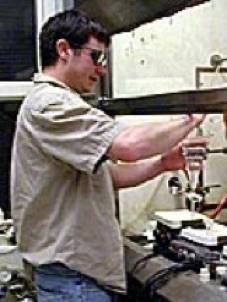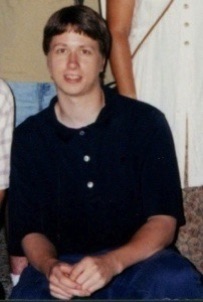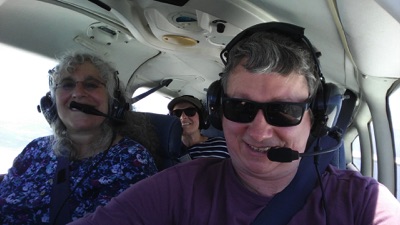Dr. Marc Anderson
Thesis abstract:
Part I of this dissertation briefly addresses the mechanism of cytotoxicity of the enediyne antibiotics (e.g., the calicheamicins). Compounds in this class possess the interesting enediyne structural feature, which often following a trigger event that strains the molecule, undergo Bergman cyclization to generate 1,4-aryl diradical intermediates. In the accepted mechanism of action for these antibiotics, this highly reactive transient species then abstracts hydrogen from deoxyribose at generally the 5’ or 4’ positions, ultimately leading to DNA cleavage. Herein, we contribute evidence that amino acids can be alternative targets for enediyne-derived aryl radicals. Specifically, aryl radicals were generated in the presence of an α-deuteroglycine model system, and deuterium incorporation was observed in the product, implying that deuterium was abstracted from the α-position of the amino acid. These results have been published1 and add to a growing body of evidence that suggests that enediyne-derived radicals may react with other biomolecules than DNA.
In part II, the use of acyl hydrazines (hydrazides) as precursors to acyl radicals is explored. Many methods exist in the literature for the generation of acyl radicals, but they often require toxic and expensive reagents, limiting their practicality. Alkyl hydrazines (R-NHNH2) have been used as precursors for alkyl radicals to prepare initiators for living free-radical polymerization. This led to the idea of generating acyl radicals from readily available acyl hydrazine precursors (R-CO-NHNH2). Model studies showed that simple acyl hydrazines could be mildly oxidized with loss of N2 to acyl radicals, which could then be stoichiometrically trapped with nitroxide radicals. Attention was then turned to performing more synthetically useful radical cyclization reactions. Several substrates were prepared and subject to the same mild oxidative conditions to generate acyl radicals which were then subsequently cyclized and trapped with varying degrees of success. A second class of acyl hydrazines was also examined in which substrates substituted with a leaving group (R-CO-NHNH-Lg) were converted to acyl radicals. The subsequent trapping or cyclization of these radicals was also explored.
Ph.D. 2001: I. Abstraction of Deuterium from Dideuteroglycine by Aryl Radical: a Model for 1,4-Aryl Diradical Reactions with Proteins
II.Acyl Hydrazines as Precursors to Acyl Radicals: Direct Trapping and Cyclization Studies
1998 Outstanding Teaching Assistant Award (Chemistry) UC Santa Cruz
2000 Outstanding Teaching Assistant Award (University-wide) UCSC
B.S. Computer Science, University of Colorado at Boulder
Postdoc1: UC San Francisco with Prof. Kip Guy
Postdoc2: San Francisco State University with Prof. Cliff Berkman
Marc is now an Associate Professor of Chemistry at San Francisco State
Publications with the Braslau Group:
R. Braslau,* M. O. Anderson, F. Rivera, T. Haddad, A. Jimenez, and J. R. Axon, “Acyl Hydrazines as Precursors to Acyl Radicals” Tetrahedron, 2002, 58, 5513-5523.
R. Braslau,* M. O. Anderson, "Nitroxides” in Free Radicals in Organic Synthesis, P. Renaud, M. Sibi, Eds.; Wiley-VCH: Weinheim, 2001, Chap. 3, Vol. 2, pp. 127-149.
R. Braslau,* M. O. Anderson, "Abstraction of Deuterium from Dideuteroglycine by Aryl Radicals: A Model for 1,4-Benzene Diradical Reactions with Proteins," Tetrahedron Letters, 1998, 39, 4227-4230.




